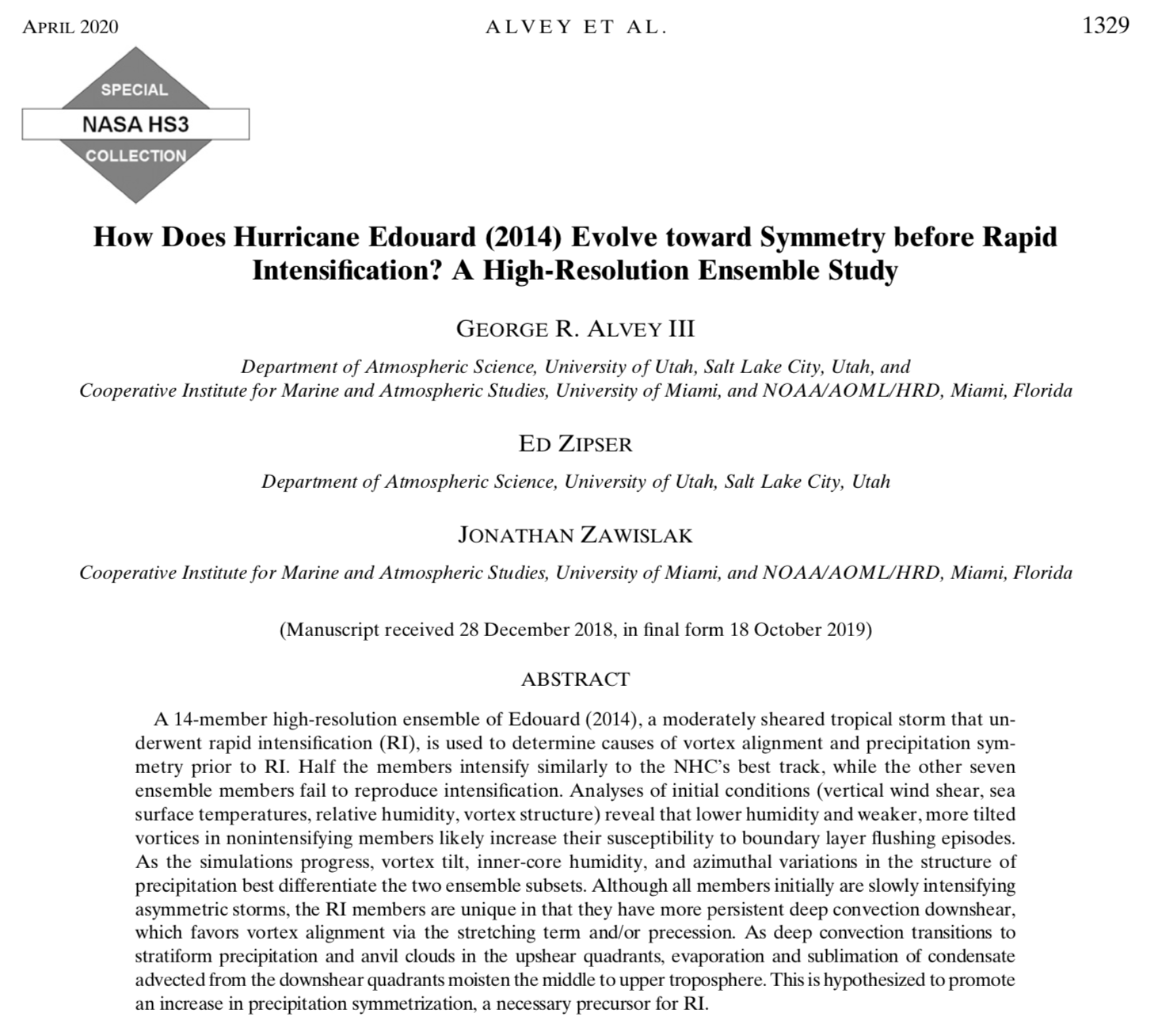Resumen: Tropical cyclones (TCs) usually weaken when there is a large change in the wind speed or direction with height (wind shear) or when there is dry air in the core. Some TCs, like Hurricane Edouard (2014) can intensify, even rapidly, under these conditions. We use a series of model runs to understand how a TC can moisten under these conditions.

Important Conclusions:
- Wind shear can cause the TC center to be in different locations with height. When the centers are in the same location with height (what we call alignment), conditions are favorable for rapid intensification. The alignment appears to result from both persistent thunderstorms and the motion of centers at different heights.
- As rain falls, the water evaporates, moistening the air. After the TC becomes more aligned, but before rapid intensification, moisture moves from where the convection is occurring into drier areas in the core. This, and the evaporating rain help moisten the otherwise unfavorable, dry middle layers of the atmosphere.
You can read the study at https://journals.ametsoc.org/doi/abs/10.1175/JAS-D-18-0355.1.
